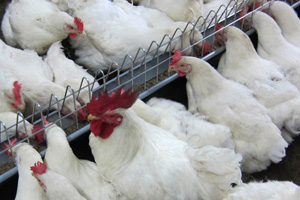Feed and nutrition needs of the MENA region discussed

The Middle East and North Africa (MENA) region is expected to grow by 300 million people by 2050. “This offers immense opportunities for additional food supply”. This was said by Professor Xavier Gellynck, of the Faculty of Bioscience Engineering at Ghent University, who attended a three day panel discussion in Izmir, Turkey, organised by Kemin.
Kemin sees that animal protein consumption and feed production is rapidly increasing in the Middle East, North Africa and Turkey. To examine how to optimise animal nutrition, feed quality and ultimately profitability in these regions, the company brought together industry experts to discuss this in further detail.
Use of feed additives
Professor Alaeldein Abudabos, of King Saud University in Saudi Arabia, and Professor Taha Najar, of the National Agronomic Institute of Tunisia, said the MENA region is in need of natural solutions for better gut health management. Abudabos presented a broiler trial, which showed that an active microbial* was effective in reducing the impact of Clostridium perfringens – decreasing the clostridium count in the ileum from 6 log cfu/g in the control group to 1 log cfu/g in the microbial group. Also featured on the panel, Dr. Shaker Shannak, feed nutritionist in the Middle East, discussed how enzymes can help to promote efficient animal production in MENA countries. According to Shannak, enzymes assist with the breakdown of complex and varying substrates used in animal feed diets and can help alleviate the variation of raw materials. She stressed the benefits of a multi-enzyme combination, which has more than one level of enzyme activity.
Be aware of mycotoxins
In regards to feed quality, Professor Siska Croubels, of the Faculty of Veterinary Medicine at Ghent University, stated that mycotoxins continue to remain a complex and challenging topic. She strongly stressed that research needs to focus on the effects of mycotoxins at low levels, both individually and together. She presented research with LC MS analysis, showing that more than 20 metabolites often occur simultaneously as well as novel data to demonstrate the connection between mycotoxins and gut health. Broilers given a DON contaminated feed had significantly lower villi height in the small intestines and increased inflammatory reactions, which was a predisposing factor to higher levels of necrotic enteritis.
Quality of oils and fats
Also providing insights, Dr. Mauro di Benedetto, Kemin senior technical service manager, discussed how to improve nutrition by evaluating the nutritional and quality profile of oils and fats. Like many raw materials, lipids come from a wide variety of sources and are prone to large variations in their nutritive value, said Benedetto. Traditionally, nutritionists analysed oils and fats using the standard energy value, which Kemin researchers have found to be quite different from the actual values. Numerous analyses have resulted in up to 30% variations in AME values for a single oil type. According to Benedetto, Kemin Industries’ Lipid Evaluation Test allows nutritionists to work with their Kemin representative to ensure they have accurate, reliable numbers. The nutritional value of oils and fats are characterised by the ratio of unsaturated/saturated fatty acids, the level of free fatty acids, as well as the level of moisture and various impurities.
Broiler improvements
Furthermore, discussing the importance and need to improve broiler performance among MENA countries, Matthew Wilson, technical manager from COBB Europe, shared knowledge on wet litter management. Wilson explained that wet litter management is all about moisture control, in essence it is the balance between the factors that introduce moisture into the broiler house (the chickens, water lines, feed and gut health diseases such as dysbacteriosis) and the ventilation system – the only management tool available to remove moisture from the broiler house.
The panelists presented the audience with new ideas and encouraged greater use of the animal nutrition and health solutions available to them in order to help grow production and profitability in the MENA region.
*Clostat











